The insulin-like effect of growth hormone on insulin-like growth factor II receptors is opposed by cyclic AMP. Evidence for a common post-receptor pathway for growth hormone and insulin action.
J Eriksson, I Gause-Nilsson, P Lönnroth, U Smith
Index: Biochem. J. 268(2) , 353-7, (1990)
Full Text: HTML
Abstract
The counter-regulatory effects of beta-adrenergic stimulation and cyclic AMP on the insulin-like action of growth hormone (GH) on the subcellular distribution of insulin-like growth factor II (IGF-II) receptors were studied in fat cells from hypophysectomized (Hx) and sham-operated rats. For comparison, the effect of insulin on this process was also studied. Basal IGF-II binding was increased by approx. 2-fold in cells from Hx as compared with sham-operated animals. The stimulatory effect of insulin was decreased in Hx cells, mainly due to a basal redistribution but also to a reduced total number of receptors. GH exerted an acute insulin-like effect in cells from Hx rats and stimulated the translocation of IGF-II receptors from an intracellular pool to the plasma membrane. beta-Adrenergic stimulation with isoprenaline or addition of the non-metabolizable cyclic AMP-analogue N6-monobutyryl cyclic AMP induced a cellular resistance to both GH and insulin and also reduced the responsiveness to these hormones. Adenosine exerted a modulatory effect on both hormones. Binding of 125I-labelled GH to its receptors was not significantly changed by any of these factors. It is concluded that: (1) beta-adrenergic stimulation and cyclic AMP induce a cellular GH resistance at a level distal to the GH-binding site, and (2) the insulin-like effect of GH shares a common pathway with insulin which occurs at the post-binding level.
Related Compounds
| Structure | Name/CAS No. | Molecular Formula | Articles |
|---|---|---|---|
 |
N6-Monobutyryladenosine 3′:5′-cyclic monophosphate sodium salt
CAS:70253-67-7 |
C14H17N5NaO7P |
|
Protein kinase A and B-Raf mediate extracellular signal-regu...
2009-11-01 [Mol. Pharmacol. 76 , 1123-1129, (2009)] |
|
Cryptic receptors for insulin-like growth factor II in the p...
1996-06-13 [Biochim. Biophys. Acta 1282(1) , 57-62, (1996)] |
|
Expression of aquaporin 8 and its up-regulation by cyclic ad...
2003-04-01 [Am. J. Obstet. Gynecol. 188(4) , 997-1001, (2003)] |
|
Abnormal adenosine 3'.5'-monophosphate stimulation of renal ...
1989-03-01 [Endocrinology 124(3) , 1184-9, (1989)] |
|
Acquisition of a transcriptionally permissive state during t...
1992-02-01 [Dev. Biol. 149(2) , 457-62, (1992)] |